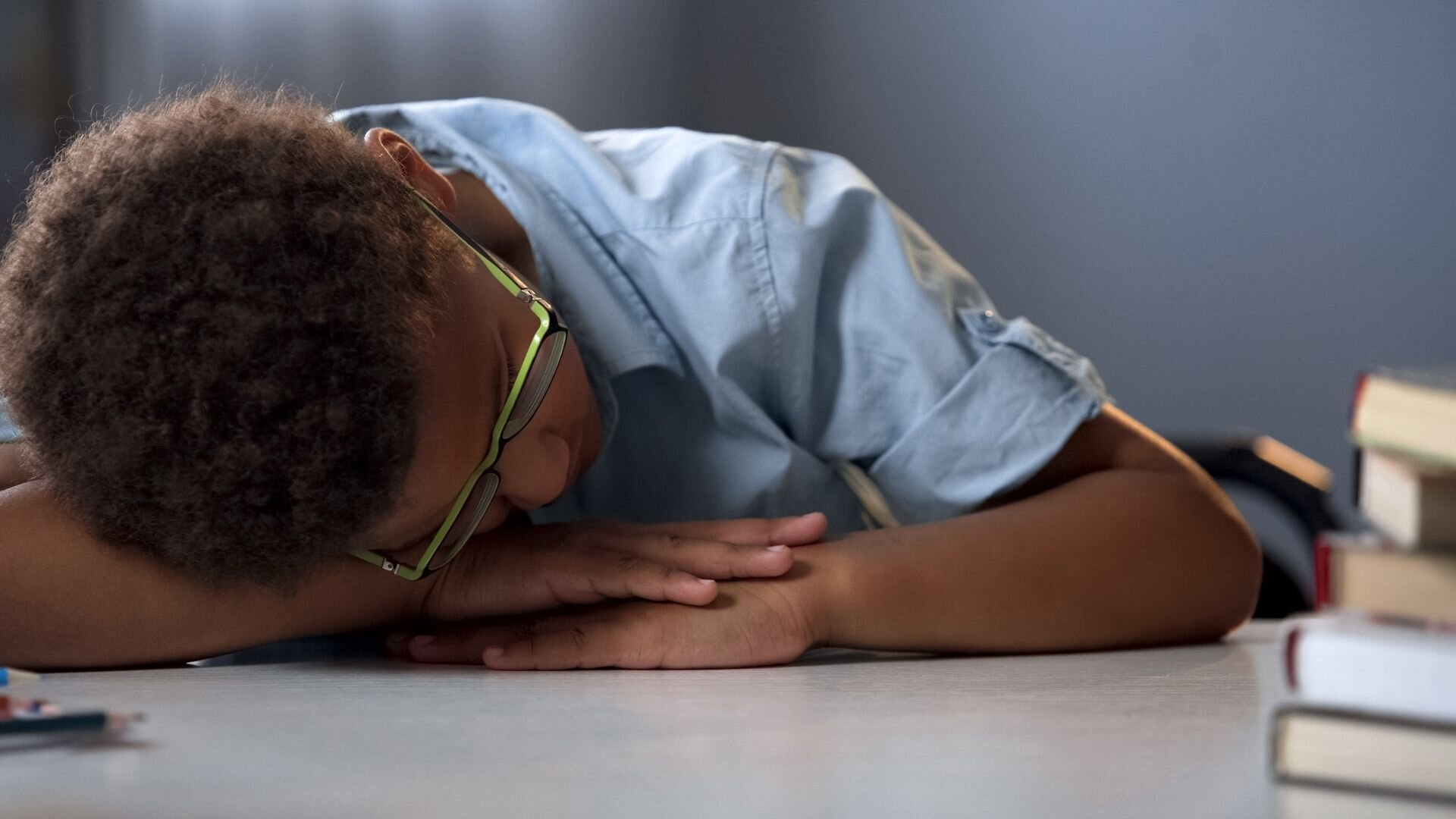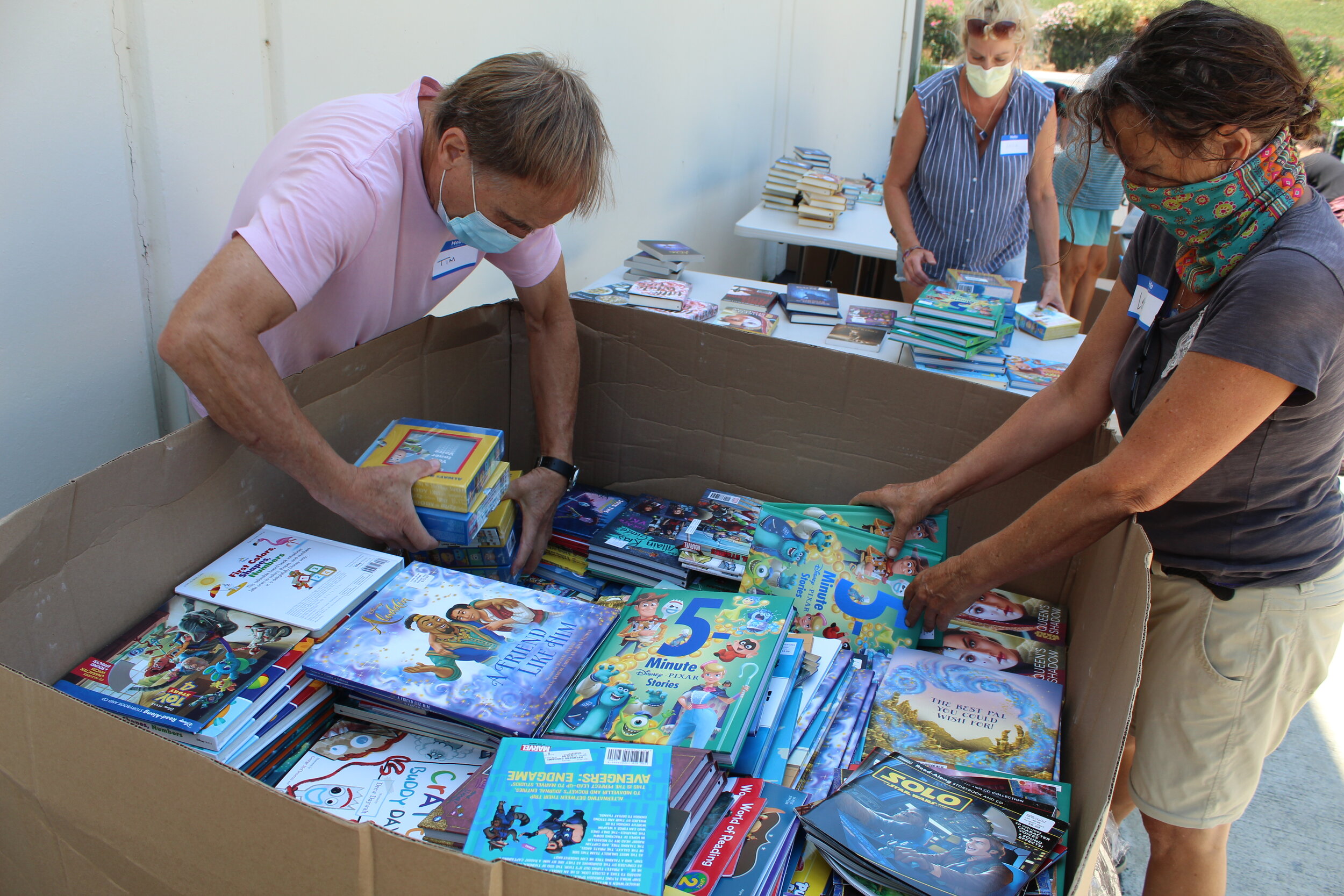Written by Ben Hollingshead, Words Alive volunteer and student at The Bishop's School in San Diego.
A student seated at a desk rests his head on his arms.
Last year, as COVID-19 started to spread virulently across the globe, schools were suspended in 188 countries and over 90% of enrolled learners, a whopping 1.5 billion students worldwide, were out of school, creating a global scale of disruption in education that is completely unprecedented. Today, over a year after the first cases of COVID were diagnosed in the United States, distance learning has taken a toll on the mental well-being of students.
“All we are left with is the monotony of academics on Zoom on repeat. ”
One of my friends, a senior in high school, described it well when he said he has recently “hit the proverbial pandemic wall” after nearly a year in quarantine. “All that extra stuff that makes school fun—the sports, the rehearsals, the school lunches and just the fun spontaneously hanging out with friends—has been stripped from our experience. And all we are left with is the monotony of academics on Zoom on repeat.”
A black-and-white image of someone typing at a laptop.
For many of us, online school is frustrating. During a typical day online, students spend 6-7 hours staring at the computer screens trying to focus on lectures and then another 3-4 hours on homework also on the computer. These sterile digital screens typically do not allow us to gauge emotions in the room or truly interact with our friends like we would in a regular classroom.
This lack of interaction is tough, especially in classes where discussion and debate is the primary basis for learning. It also makes classes that require interactive laboratory work almost impossible to conduct effectively. So while students, in theory, are attending classes, they may not be getting the same level of academic rigor as they would in a typical in-person classroom.
A girl sits alone on a couch.
While the loss of learning is concerning, it is the sense of isolation that comes with online learning that is the most disturbing. School is where most of us build our social network. Interacting with friends at school is a healthy way to buffer the stresses (tests, parental pressure) that we experience. With school closures, this physical social safety-net no longer exists. The new normal is disconcerting and extremely lonely.
Added to this sense of isolation, many families face increased stress and anxiety as more parents are faced with job losses and food insecurity as a result of the pandemic. Even in households where the parents have not experienced job loss, students mention feeling cooped-up after months of isolation.
“We are on Zoom all day long, everyone staring at different computer screens 24/7.”
My friend A.V. described feeling “claustrophobic as everyone in my family is stuck inside the house. I’m in my room, my brother in his, my dad and mom are in a separate room also working. We are on Zoom all day long, everyone staring at different computer screens 24/7.”
All these factors, coupled with the constant fear about catching the virus itself—not to mention the most vitriolic and divisive Presidential Election in the history of this country taking place as they struggle through school—has resulted in a significant increase in the number of students that need emergency mental health counseling services. In a recent Gallup poll, nearly three in 10 (29%) parents disturbingly say their child is "already experiencing harm" to their mental health because of social distancing and school closures. And another 14% of parents say that their children are close to hitting their limits.
According to Sandy Mueller, Senior Director of Behavioral Health Services for Rady Children’s Hospital, the hospital has seen a “spike, about a 5 percent to 7 percent increase in the kids coming to our emergency room” with mental health issues compared to the previous year (San Diego Union Tribune 2/2021). This mirrors national data from the CDC that shows a 24% increase in mental health-related ER visits among children 5-11 and 31% increase among adolescents ages 12 to 17 compared to similar periods in 2019.
What is especially heartbreaking is that the pandemic has disproportionately affected already vulnerable populations. In San Diego County alone, 100,000 children do not have basic access to the Internet so they can attend their classes. While the average student could fall behind seven months academically, the loss could be as much as 10 months for Black children and nine months for Latinx children. Students with existing mental health conditions and those with learning disabilities have not had the same face-to-face access to counselors and resources as they did pre-pandemic. Things have been especially dire for children in abusive homes, as the pandemic has forced them to be locked in with their abusers with no access to the safe haven of schools.
A picture of volunteers sorting book donations.
During the pandemic, Words Alive volunteers helped families grow their home libraries and read together while schools were closed.
But while the challenges of the pandemic are many, we as a community, and you and I as individuals, are not powerless. One thing I am definitely grateful for is the opportunity to volunteer at Words Alive to support their work during the pandemic. It has shown me that we can take action to help our students, and over the last year, I’ve watched countless counselors, educators, nonprofits, families and community members do just that, stepping up time and time again to confront the challenges thrown at them by this virus.
And now, hope seems to be on the horizon. With vaccinations being administered and the number of cases dropping, public schools are beginning to reopen in a hybrid model. This model appears to be working well as many schools in San Diego have already moved to a hybrid model that combines distance and in-person learning, including The Bishop’s School, the school I attend. For the two days a week that I am physically at school, I appreciate, more than ever, the blessing of being able to hang out with friends and meet teachers on campus.
A row of paper dolls wearing masks holds hands on an orange background.
This gratitude is ultimately the silver lining that I will take away from this pandemic. Small things that we tended to take completely for granted, like eating out or watching a movie with friends, will now feel new and will be celebrated.
After a year of disruptions and social isolation, I believe my generation of students will emerge more resilient and thankful for everything we have.
—
Thank you, Ben, for sharing your experiences with us! We are so grateful for your support and care for your fellow students.
If you connected with Ben’s story and want to take action to help our community’s most vulnerable students emerge strong from the pandemic, you can support our online, free resources for teens right here at Words Alive. Through our Treat Yo’ Shelf (formerly QuaranTEENs) resource, Words Alive has developed journaling prompts and writing exercises to help students explore healthy coping strategies for the increased stresses they are experiencing.
We are also about to launch our annual Art & Lit project in partnership with ArtReach and for the first time ever, the entire community can participate!
A red and gray Identity Circle from this year’s Art & Lit project.
Art & Lit helps students connect books to their own lives by guiding them through a thoughtful and engaging art project. In response to the mental health crisis many students are facing this year, our project is intentionally focused on books that explore themes of loneliness and isolation and you will explore themes of identity, courage, and bravery as you create your unique art piece. Learn more about getting involved here.













